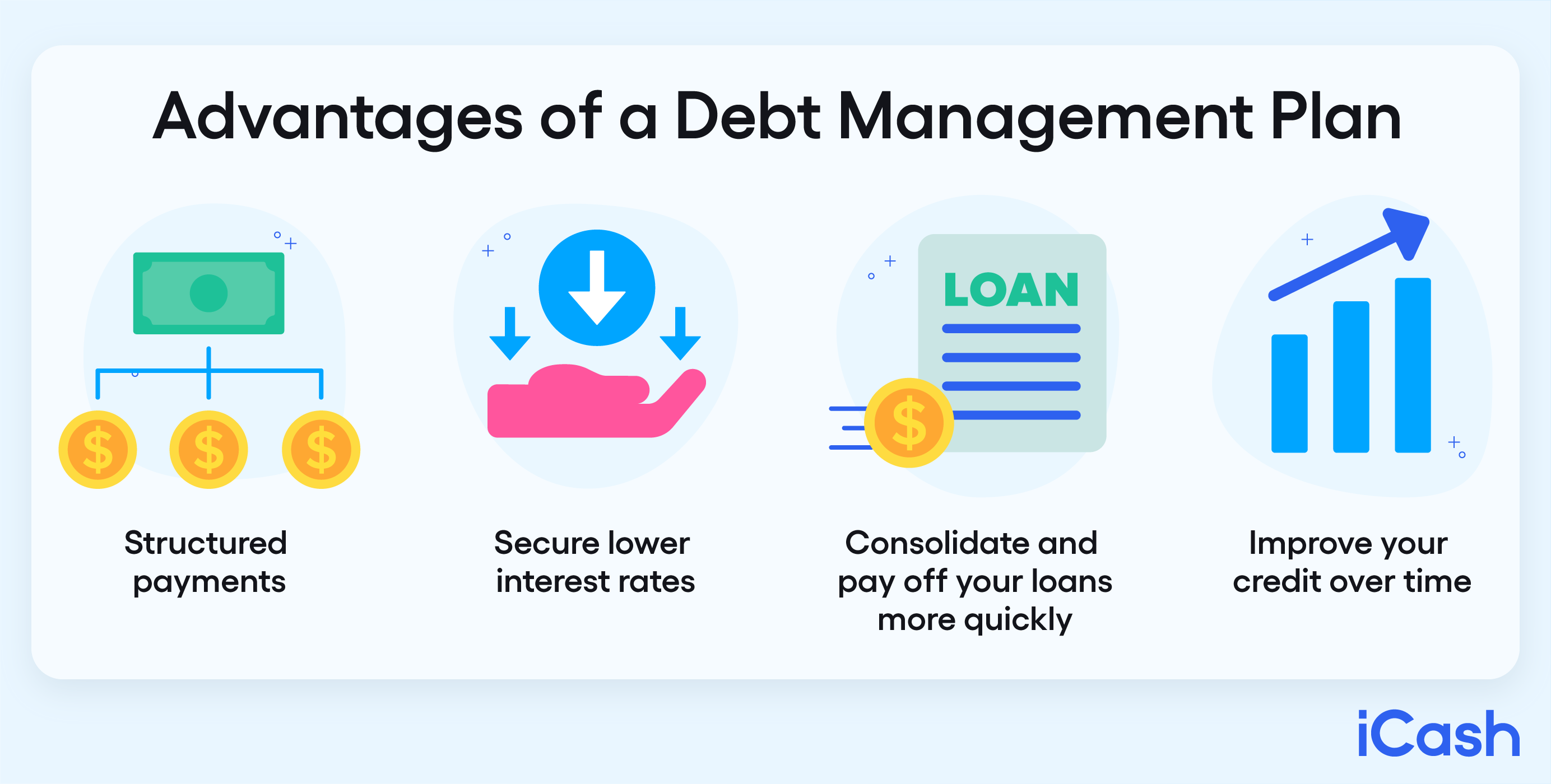Every Little Thing You Need to Understand About Developing an Individualized Debt Administration Strategy
In the world of individual financing, developing a tailored financial debt monitoring plan is typically the foundation of accomplishing financial security and tranquility of mind. As you browse the complexities of developing a personalized debt monitoring plan, understanding the intricacies of each action is essential to your financial success.
Evaluating Your Current Financial Obligation Scenario
One need to first conduct a complete analysis of their existing debt obligations prior to formulating a reliable debt administration plan. Create a thorough checklist of each financial debt, including the total amount owed, interest prices, minimal regular monthly settlements, and due days.
After assembling this info, calculate your overall debt-to-income ratio by separating your regular monthly debt payments by your monthly revenue. This ratio is a vital sign of your capacity to manage current financial obligation degrees properly. Furthermore, assess your credit history report to identify any kind of errors or inconsistencies that may be impacting your credit history. Recognizing these elements of your financial circumstance will assist you in creating a tailored financial obligation monitoring plan customized to your particular demands and goals.
Setting Financial Goals and Targets

When establishing financial objectives, it is necessary to be details, quantifiable, achievable, pertinent, and time-bound (WISE) As an example, you may set a goal to repay a specific amount of debt within a specific period, such as decreasing your credit card equilibrium by $5,000 in the following one year - More Discussion Posted Here. By setting clear targets like this, you can track your progression and stay inspired to accomplish your debt administration objectives
Furthermore, think about prioritizing your financial debts based on aspects such as passion prices, outstanding equilibriums, and settlement terms. By focusing on high-interest financial debts first, you can save money in the lengthy run and increase your trip toward financial freedom. Remember, everyone's monetary scenario is unique, so customize your goals and targets to fit your specific requirements and conditions.
Creating a Realistic Budget
Crafting a distinct spending plan is a basic step in effective debt management and economic preparation. A reasonable budget plan serves as a roadmap for your economic health and wellness, aiding you track your income, expenditures, and financial debt repayments. To develop a sensible budget plan, start by detailing all your resources of revenue.
Consistently testimonial and readjust your budget plan as needed to remain on track with your financial goals and debt settlement strategy. By adhering to a reasonable budget plan, you can properly manage your debt and job in the direction of an extra safe economic future.
Exploring Financial Obligation Settlement Strategies
After establishing a realistic spending plan, the following crucial step in efficient financial debt monitoring is to check out numerous financial obligation payment strategies. One typical strategy is the snowball technique, where you concentrate on repaying the smallest debts first while making minimum repayments on larger debts. This method can help develop energy as you see smaller sized financial obligations being gotten rid of, offering inspiration to take on bigger ones.
Another approach is the avalanche approach, which involves prioritizing financial debts with the greatest rate of interest. By targeting high-interest financial obligations first, you can lower the total quantity you pay in rate of interest in time. This technique might be a lot more cost-efficient over time, although it may take longer to see specific financial debts completely settled.
Financial obligation combination is one more alternative where you incorporate several financial debts into a solitary loan with a lower rate of interest. This can streamline your settlement process go to the website and possibly lower the overall interest paid. However, it's vital to carefully think about the fees important source and terms connected with combination to ensure it's the best choice for your financial circumstance.
Monitoring and Changing Your Plan

Changing your strategy might involve reallocating funds to take on high-interest financial obligations first, negotiating with lenders for reduced interest prices or far better repayment terms, or checking out added revenue sources to quicken debt repayment. As your financial circumstance advances, your financial obligation monitoring strategy need to adapt accordingly to stay reliable. By staying adaptable and proactive in surveillance and readjusting your strategy, you can maximize your efforts towards repaying your check that financial debts efficiently and achieving your economic objectives.
Conclusion
Finally, developing an individualized financial debt administration strategy entails evaluating existing financial debt, establishing financial goals, creating a realistic budget plan, checking out settlement approaches, and tracking and changing the strategy as needed. By following these steps, individuals can take control of their financial circumstance and work towards ending up being debt-free. It is necessary to remain disciplined and committed to the strategy in order to accomplish long-term financial stability.
One have to initially conduct an extensive assessment of their current financial debt commitments before developing an efficient debt management strategy.After establishing a practical budget, the following critical action in efficient debt management is to explore various financial debt repayment strategies - More Discussion Posted Here.To properly handle your financial obligation, continual monitoring and change of your financial debt monitoring strategy are vital parts for lasting economic security.Adjusting your strategy might entail reapportioning funds to take on high-interest financial obligations initially, bargaining with financial institutions for reduced passion rates or much better settlement terms, or discovering extra revenue resources to accelerate debt repayment.In final thought, producing a customized financial obligation monitoring strategy involves assessing present debt, setting economic objectives, developing a sensible spending plan, discovering repayment approaches, and monitoring and changing the plan as required